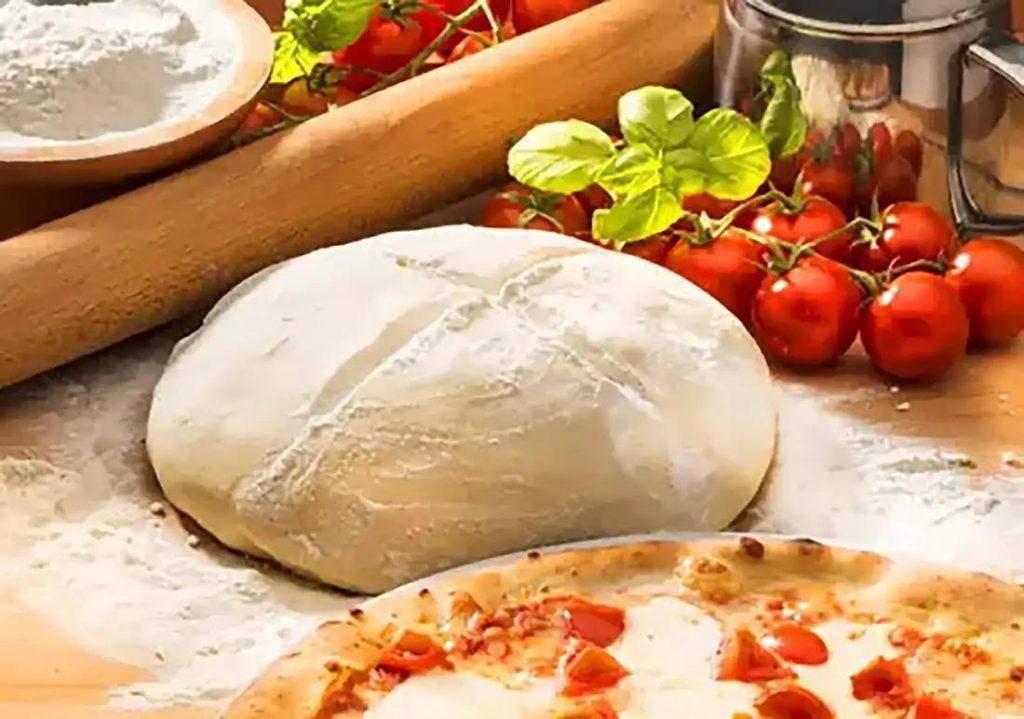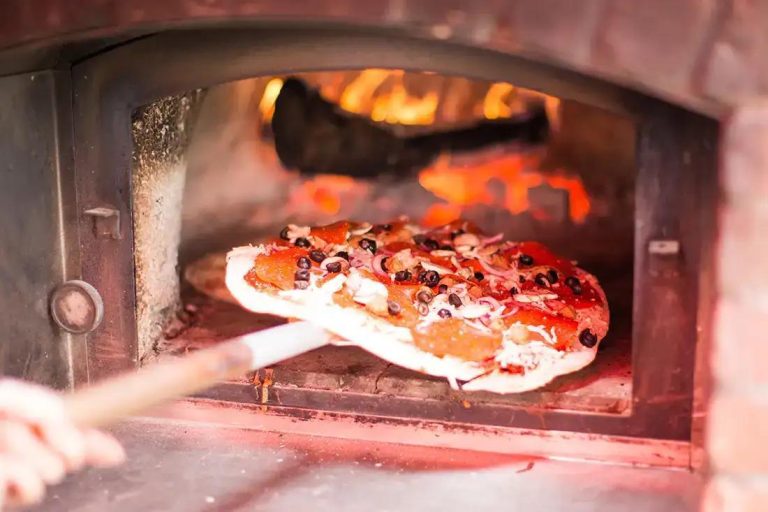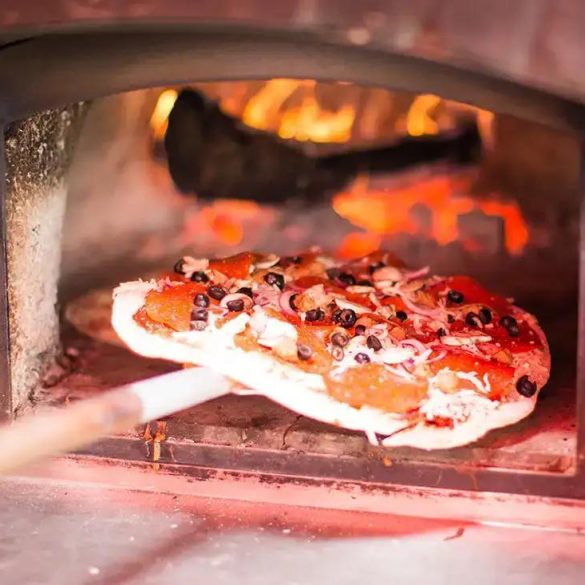Table of Contents
If you want that authentic Italian pizzeria experience at home, mastering a wood-fired pizza dough recipe is the first step. The smoky flavor and crispy yet chewy texture you get from cooking pizza in a wood-fired oven are unmatched. While making wood-fired pizza dough requires a bit of patience and skill, the payoff is well worth it. In this post, we’ll guide you through the entire process—from gathering ingredients to answering common questions. Let’s dive into how to make Wood-Fired Pizza Dough that’ll make your pizzas restaurant-quality!
How to Make Wood-Fired Pizza Dough Recipe

Ingredients
To make the best wood-fired pizza dough, using high-quality ingredients is essential. Each component contributes to the dough’s texture and flavor, so let’s break down what you’ll need:
- 500g ’00’ Flour – The fine grind of this Italian flour helps create the light, crispy crust that is a hallmark of wood-fired pizza.
- 325ml Water (lukewarm) – Lukewarm water is essential for activating the yeast and ensuring even fermentation.
- 10g Salt – Salt adds flavor and helps control the fermentation process.
- 7g Active Dry Yeast – Yeast helps the dough rise and gives it that beautiful airiness.
- 1 tbsp Olive Oil – Adding olive oil contributes to the dough’s flexibility and helps create a slightly crispy texture.
- 1 tsp Sugar – A touch of sugar helps activate the yeast and gives the dough a hint of sweetness.
Instructions
Now that you have your ingredients ready, follow these step-by-step instructions on how to make Wood-Fired Pizza Dough from scratch. Each step plays a crucial role in ensuring your dough is perfect for wood-fired cooking.
Step 1: Activate the Yeast
In a small bowl, mix the lukewarm water and sugar. Sprinkle the active dry yeast over the top and let it sit for about 5–10 minutes, or until it becomes frothy. This is a sign that the yeast is alive and ready to do its job.
Step 2: Combine Dry Ingredients
In a large mixing bowl, combine the ’00’ flour and salt. Mixing the dry ingredients ensures that the salt is evenly distributed and doesn’t kill the yeast during the next step.

Step 3: Mix Wet and Dry Ingredients
Once your yeast mixture is frothy, make a well in the center of the flour mixture and pour in the yeast mixture and olive oil. Begin mixing with your hands or a dough hook on a stand mixer at low speed.
Step 4: Knead the Dough
Knead the dough for about 10 minutes, either by hand or using a mixer on medium speed. The dough should be smooth, elastic, and slightly tacky. If it’s too sticky, add a little more flour; if it’s too dry, add a tablespoon of water at a time until the desired texture is reached.
Step 5: Let the Dough Rise
Form the dough into a ball and place it in a lightly oiled bowl. Cover with a damp cloth or plastic wrap and let it rise in a warm spot for about 1-2 hours, or until it has doubled in size. This fermentation process is essential for developing flavor.
Step 6: Punch Down and Divide
Once the dough has risen, punch it down to release excess air. Divide it into 2-4 equal portions, depending on how large you want your pizzas to be. Form each portion into a ball and cover again for about 30 minutes.
Step 7: Shape the Dough
Take one dough ball and flatten it on a lightly floured surface. Use your hands or a rolling pin to stretch the dough into a thin round shape. The edges can be slightly thicker to create a rustic crust. Don’t make the dough too thick, as it needs to cook quickly in the wood-fired oven.
Step 8: Cook in a Wood-Fired Oven
Preheat your wood-fired oven to around 750°F (400°C). Transfer your stretched pizza dough onto a lightly floured pizza peel and add your favorite toppings. Slide the pizza into the oven and cook for 2–4 minutes, rotating it halfway through to ensure an even bake. The high temperature will give your crust that beautiful char and airy texture.

Tips for Perfect Wood-Fired Pizza Dough
- Use ’00’ flour: This fine Italian flour is essential for achieving the right texture. It’s designed to stand up to the high heat of a wood-fired oven.
- Don’t overwork the dough: Once your dough has risen, handle it as little as possible to retain the air bubbles that will give your crust a chewy texture.
- Let the dough rest: Resting the dough after you shape it allows the gluten to relax, making it easier to stretch without tearing.
- Preheat your oven thoroughly: Wood-fired ovens take time to heat up but require a consistently high temperature to achieve that perfect pizza crust.
- Rotate frequently: Pizzas in a wood-fired oven cook very quickly, so make sure to rotate them often for an even char.
FAQs
1. How long should I let the dough rise?
Let the dough rise for about 1–2 hours until it has doubled in size. For more flavor, you can let it ferment slowly in the refrigerator overnight.
2. Can I make the dough ahead of time?
Yes, you can make the dough in advance and store it in the fridge for up to 24 hours. Just let it come to room temperature before shaping and baking.
3. What is the best temperature for baking wood-fired pizza?
The ideal temperature for cooking wood-fired pizza is between 750°F and 900°F (400°C to 485°C). This ensures a quick bake and gives the crust that perfect balance of crispy and chewy.
4. Can I use regular flour instead of ’00’ flour?
While you can substitute all-purpose flour, the results won’t be the same. ’00’ flour creates a lighter, airier crust that’s ideal for high-heat baking.
5. Do I need a special oven to make wood-fired pizza dough?
Yes, a wood-fired oven is recommended for the authentic experience. However, you can mimic the high-heat environment using a pizza stone in a conventional oven preheated to its highest setting.

Substitutes
While this wood-fired pizza dough recipe uses traditional ingredients, there are a few substitutions you can make depending on dietary needs or ingredient availability:
- Flour Substitutes: If you don’t have ’00’ flour, bread flour or all-purpose flour can be used, though the texture will be slightly different.
- Yeast: Instant yeast can be used instead of active dry yeast. You can skip the activation step and add it directly to your dry ingredients.
- Gluten-Free Option: If you’re looking for a gluten-free version, try using a gluten-free flour blend designed for bread-making. Keep in mind that gluten-free dough can be more challenging to work with.
Nutrition Information
Here’s the approximate nutritional breakdown per serving of wood-fired pizza dough, assuming you make four servings from the recipe:
- Calories: 220 kcal
- Carbohydrates: 42g
- Protein: 6g
- Fat: 3g
- Fiber: 2g
- Sugar: 1g
- Sodium: 480mg
Keep in mind that the toppings you choose for your pizza will significantly affect the overall nutritional content.
Conclusion
Now that you know how to make Wood-Fired Pizza Dough, it’s time to put your skills to the test. The combination of ’00’ flour, high heat, and a well-prepared dough will give you that traditional wood-fired pizza flavor and texture. Whether you’re a seasoned pro or just starting, this recipe for How to Make Wood-Fired Pizza Dough is sure to impress. So, fire up your wood oven, get creative with your toppings, and enjoy the best homemade pizza you’ve ever tasted!







